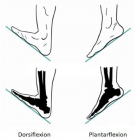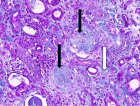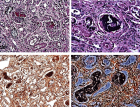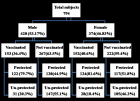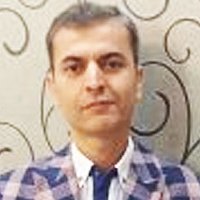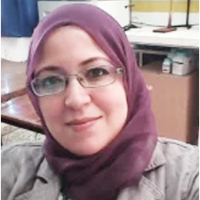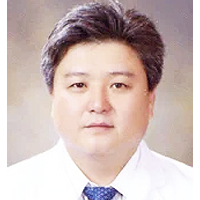Abstract
Hypothesis
Disposable Diapers in Infancy and Their Potential Detrimental Impact on Male Fertility in Adulthood
Eliezer Girsh*
Published: 22 July, 2024 | Volume 7 - Issue 3 | Pages: 084-092
The overall human fertility rate has been continuously declining across the globe for a number of reasons. This review summarizes data, which proposes that the use of disposable diapers for newborns and infants may incur reproductive harm in adulthood. More than 70 years ago, a disposable synthetic waterproof baby diaper was developed, mainly to reduce the burden of working mothers. Modern diapers feature the same original design, which contains one unit of disposable material wrapped around the perineum to collect urine and feces. This design results in an increase in internal area temperatures by 2-4 °C, which can be detrimental to the function and development of reproductive cells. Moreover, the standard diaper template promotes the free passage of feces, including fecal bacteria, to the genitals, which can lead to urogenital infection and reproductive impairments. The available clinical data suggest that diaper use during infancy may have a negative impact on fertility after puberty. There is a critical need for additional studies to better assess the impact of diapers on reproductive health.
Read Full Article HTML DOI: 10.29328/journal.cjog.1001170 Cite this Article Read Full Article PDF
References
- Carlsen E, Giwercman A, Keiding N, Skakkebaek NE. Evidence for decreasing quality of semen during past 50 years. BMJ. 1992;305(6854):609-613. Available from: https://doi.org/10.1136/bmj.305.6854.609.
- Levine H, Jørgensen N, Martino-Andrade A, Mendiola J, Weksler-Derri D, Mindlis I, Pinotti R, Swan ShH. Temporal trends in sperm count: a systematic review and meta-regression analysis. Hum Reprod Update. 2017;23(6):646-659. Available from: https://doi.org/10.1093/humupd/dmx022.
- Ramlau-Hansen CH, Thulstrup AM, Aggerholm AS, Jensen MS, Toft G, Bonde JP. Is smoking a risk factor for decreased semen quality? A cross-sectional analysis. Hum Reprod. 2007;22(1):188-196. Available from: https://doi.org/10.1093/humrep/del364.
- Ramlau-Hansen CH, Thulstrup AM, Olsen J, Ernst E, Andersen CY, Bonde JP. Maternal smoking in pregnancy and reproductive hormones in adult sons. Int J Androl. 2008;31(6):565-572. Available from: https://doi.org/10.1093/humrep/del364.
- Afeiche M, Williams PL, Mendiola J, Gaskins AJ, Jørgensen N, Swan SH, et al. Dairy food intake in relation to semen quality and reproductive hormone levels among physically active young men. Hum Reprod. 2013;28(8):2265-2275. Available from: https://doi.org/10.1093/humrep/det133.
- Bieniek JM, Kashanian JA, Deibert CM, Grober ED, Lo KC, Brannigan RE, et al. Influence of increasing body mass index on semen and reproductive hormonal parameters in a multi-institutional cohort of subfertile men. Fertil Steril. 2016;106(5):1070-1075. Available from: https://doi.org/10.1016/j.fertnstert.2016.06.041.
- Hjollund NHI, Bonde JPE, Jensen TK, Olsen J. Diurnal scrotal skin temperature and semen quality. Int J Androl. 2000;23:309-318. Available from: https://doi.org/10.1046/j.1365-2605.2000.00245.x.
- Gaskins AJ, Afeiche MC, Hauser R, Williams PL, Gillman MW, Tanrikut C, et al. Paternal physical and sedentary activities in relation to semen quality and reproductive outcomes among couples from a fertility center. Hum Reprod. 2014;29(11):2575-2582. Available from: https://doi.org/10.1093/humrep/deu212.
- Gaskins AJ, Mendiola J, Afeiche MC, Jørgensen N, Swan SH, Chavarro JE. Physical activity and television watching in relation to semen quality in young men. Br J Sports Med. 2015;49(4):265-270. Available from: https://doi.org/10.1136/bjsports-2012-091644.
- Xia Y, Cheng S, Bian Q, Xu L, Collins MD, Chang HC, et al. Genotoxic effects on spermatozoa of carbaryl-exposed workers. Toxicol Sci. 2005;85(1):615-623. Available from: https://doi.org/10.1093/toxsci/kfi066.
- Abu-Musa AA, Nassar AH, Hannoun AB, Usta IM. Effect of the Lebanese civil war on sperm parameters. Fertil Steril. 2007;88(6):1579-1582. Available from: https://doi.org/10.1016/j.fertnstert.2007.01.067.
- Hannoun AB, Nassar AH, Usta IM, Zreik TG, Abu-Musa AA. Effect of war on the menstrual cycle. Obstet Gynecol. 2007;109(4):929-932. Available from: https://doi.org/10.1097/01.aog.0000257170.83920.de.
- Nargund VH. Effects of psychological stress on male fertility. Nat Rev Urol. 2015;12(7):373-382. Available from: https://doi.org/10.1038/nrurol.2015.112.
- Gosden R, Trasler J, Lucifero D, Faddy M. Rare congenital disorders, imprinted genes, and assisted reproductive technology. Lancet. 2003;361(9373):1975-1977. Available from: https://doi.org/10.1016/S0140-6736(03)13592-1.
- Leridon H. Can assisted reproduction technology compensate for the natural decline in fertility with age? A model assessment. Hum Reprod. 2004;19(7):1548-1553. Available from: https://doi.org/10.1093/humrep/deh304.
- Girsh E, Katz N, Genkin L, Girtler O, Bocker J, Bezdin S, et al. Male age influences oocyte-donor program results. J Assist Reprod Genet. 2008;25(4):137-143. Available from: https://doi.org/10.1007/s10815-008-9215-4.
- Shiraishi M, Haruna M, Matsuzaki M, Ota E, Murayama R, Murashima S. Association between the serum folate levels and tea consumption during pregnancy. Biosci Trends. 2010;4(5):225-230. Available from: https://www.biosciencetrends.com/article/346.
- Richard-Eaglin A. Male and Female Hypogonadism. Nurs Clin North Am. 2018;53(3):395-405. Available from: https://doi.org/10.1016/j.cnur.2018.04.006.
- Santoro A, Chianese R, Troisi J, Richards S, Nori SL, Fasano S, et al. Neuro-toxic and reproductive effects of BPA. Curr Neuropharmacol. 2019;17(12):1109-1132. Available from: https://doi.org/10.2174/1570159x17666190726112101.
- Chen W, Bai MZ, Yang Y, Sun D, Wu S, Sun J, et al. ART strategies in Klinefelter syndrome. J Assist Reprod Genet. 2020;37(9):2053-2079. Available from: https://doi.org/10.1007/s10815-020-01818-2.
- Saget S, Kappeler L, Grandjean V, Leneuve P, Berthaut I, Faure C, et al. Association between metabolic disorders and seminal plasma miRNA levels: a pilot study. Basic Clin Andro. 2022;32(1):9. Available from: https://doi.org/10.1186/s12610-022-00159-7.
- Bendarzka-Czerwińska A, Zmarzły N, Morawiec E, Panfil A, Bryś K, Czarniecka J, Ostenda A, et al. Endocrine disorders and fertility and pregnancy: An update. Front Endocrinol (Lausanne). 2023. Available from: https://doi.org/10.3389/fendo.2022.970439.
- Girsh E. Infertility: What is our direction? Austin Andrology. 2018;3(1):1020. Available from: https://www.refaelcare.com/wp-content/uploads/2019/01/Girsh-andrology-2018.pdf.
- Partsch CJ, Aukamp M, Sippell WG. Scrotal temperature is increased in disposable plastic lined nappies. Arch Dis Child. 2000;83(4):364-368. Available from: https://doi.org/10.1136/adc.83.4.364.
- Grove GL, Grove MJ, Bates NT, Wagman LM, Leyden JJ. Scrotal temperatures do not differ among young boys wearing disposable or reusable diapers. Skin Res Technol. 2002;8(4):260-270. Available from: https://doi.org/10.1034/j.1600-0846.2002.00336.x.
- Mieusset R, Bujan L. Testicular heating and its possible contributions to male infertility: a review. Int J Androl. 1995;18:169-184. Available from: https://doi.org/10.1111/j.1365-2605.1995.tb00408.x.
- Carlsen E, Andersson A-M, Petersen JH, Skakkebaek NE. History of febrile illness and variation in semen quality. Hum Reprod. 2003;18(10):2089-2092. Available from: https://doi.org/10.1093/humrep/deg412.
- Sergerie M, Mieusset R, Croute F, Daudin M, Bujan L. High risk of temporary alteration of semen parameters after recent acute febrile illness. Fertil Steril. 2007;88:970.e1-7. Available from: https://doi.org/10.1016/j.fertnstert.2006.12.045.
- Paul C, Murray AA, Spears N, Saunders PT. A single, mild, transient scrotal heat stress causes DNA damage, subfertility and impairs formation of blastocysts in mice. Reproduction. 2008;136:73-84. Available from: https://doi.org/10.1530/REP-08-0036.
- Waites G, Voglmayr J. The functional activity and control of the apocrine sweat glands of the scrotum of the ram. Aust J Agric Res. 1963;14:839-851. Available from: https://www.publish.csiro.au/cp/ar9630839.
- Harrison RJ, J.S. Weiner JS. Vascular patterns of the mammalian testis and their functional significance. J Exp Biol. 1949;26:304-316. Available from: https://doi.org/10.1242/jeb.26.3.304.
- Dahl E, Herrick J. A vascular mechanism for maintaining testicular temperature by counter-current exchange. Surg Gynecol Obstet. 1959;108:697-705. Available from: https://pubmed.ncbi.nlm.nih.gov/13659355/.
- Lazarus B, A.W. Zorgniotti AW. Thermoregulation of the human testis. Fertil Steril. 1975;26:757-759. Available from: https://pubmed.ncbi.nlm.nih.gov/1157962/.
- Glad Sorensen H, Lambrechtson J, Einer-Jensen N. Efficiency of the counter current transfer of heat and 113Xenon between the pampiniform plexus and testicular artery of the bull under in-vitro conditions. Int J Androl. 1991;14:232-240. Available from: https://doi.org/10.1111/j.1365-2605.1991.tb01085.x.
- Zhang MH, Zhang AD, Shi ZD, Wang LG, Qiu Y. Changes in levels of seminal nitric oxide synthase, macrophage migration inhibitory factor, sperm DNA integrity, and caspase-3 in fertile men after scrotal heat stress. PLoS ONE. 2015;10(10). Available from: https://doi.org/10.1371/journal.pone.0141320.
- Karagas MR, Weiss NS, Strader CH, Daling JR. Elevated intrascrotal temperature and the incidence of testicular cancer in noncryptorchid men. Am J Epidemiol. 1989;129(6):1104-1109. Available from: https://doi.org/10.1093/oxfordjournals.aje.a115232.
- Durairajanayagam D, Sharma RK, du Plessis SS, Agarwal A. Testicular heat stress and sperm quality. In: du Plessis SS, Agarwal A, Sabanegh Jr. ES, editors. Male Infertility: A Complete Guide to Lifestyle and Environmental Factors. Springer, New York; 2014;105–125. Available from: https://link.springer.com/chapter/10.1007/978-1-4939-1040-3_8.
- Kim B, Park K, Rhee K. Heat stress response of male germ cells. Cell Mol Life Sci. 2013;70:2623-2636. Available from: https://doi.org/10.1007/s00018-012-1165-4.
- Wang C, McDonald V, Leung A, Superlano L, Berman N, Hull NL, et al. Effect of increased scrotal temperature on sperm production in normal men. Fertil Steril. 1997;68:334-339. Available from: https://doi.org/10.1016/s0015-0282(97)81525-7.
- Hjollund NHI, Storgaard L, Ernst E, Bonde JP, Olsen J. Impact of diurnal scrotal temperature on semen quality. Reprod Toxicol. 2002;16:215-221. Available from: https://doi.org/10.1016/S0890-6238(02)00025-4.
- Abdelhamid MHM, Esquerre-Lamare C, Walschaerts M, Ahmad G, Mieusset R, Hamdi S, Bujan L. Experimental mild increase in testicular temperature has drastic, but reversible, effect on sperm aneuploidy in men: A pilot study. Reprod Biol. 2019;19:189-194. Available from: https://doi.org/10.1016/j.repbio.2019.06.001.
- Perez-Crespo M, Pintado B, Gutierrez-Adan A. Scrotal heat stress effects on sperm viability, sperm DNA integrity, and the offspring sex ratio in mice. Mol Reprod Dev. 2008;75:40-47. Available from: https://doi.org/10.1002/mrd.20759.
- Rao M, Xia W, Yang J, Hu L, Hu S, Lei H, et al. Transient scrotal hyperthermia affects human sperm DNA integrity, sperm apoptosis, and sperm protein expression. Andrology. 2016;4:1054-1063. Available from: https://doi.org/10.1111/andr.12228.
- Yaeram J, Setchell BP, Maddocks S. Effect of heat stress on the fertility of male mice in vivo and in vitro. Reprod Fertil Dev. 2006;18:647-653. Available from: https://doi.org/10.1071/rd05022.
- Chowdhury AK, Steinberger E. Early changes in the germinal epithelium of rat testes following exposure to heat. J Reprod Fertil. 1970;22:205-212. Available from: https://doi.org/10.1530/jrf.0.0220205.
- Kandeel FR, Swerdloff RS. Role of temperature in regulation of spermatogenesis and the use of heating as a method for contraception. Fertil Steril. 1988;49:1-23. Available from: https://doi.org/10.1016/s0015-0282(16)59640-x.
- Voegeli M. Contraception through temporary male sterilization. Smith College Library, Northampton, MA; 1956.
- Mieusset R, Grandjean H, Mansat A, Pontonnier F. Inhibiting effect of artificial cryptorchidism on spermatogenesis. Fertil Steril. 1985;43(4):589-594. Available from: https://doi.org/10.1016/s0015-0282(16)48502-x.
- Shafik A. Contraceptive efficacy of polyester-induced azoospermia in normal men. Contraception. 1992;45:439-451. Available from: https://doi.org/10.1016/0010-7824(92)90157-o.
- Mieusset R, Bujan L. The potential of mild testicular heating as a safe, effective and reversible contraceptive method for men. Inter J Androl. 1994; 17:186-191. https://doi.org/10.1111/j.1365-2605.1994.tb01241.x.
- Bujan L, Daudin M, Charlet JP, Thonneau P, Mieusset R. Increase in scrotal temperature in car drivers. Hum Reprod. 2000;15:1355-1357. Available from: https://doi.org/10.1093/humrep/15.6.1355.
- Hjollund NHI, Storgaard L, Ernst E, Bonde JP, Olsen J. The relation between daily activities and scrotal temperature. Reprod Toxicol. 2002;16:209-214. Available from: https://doi.org/10.1016/s0890-6238(02)00026-6.
- Brindley GS. Deep scrotal temperature and the effect on it of clothing, air temperature, activity, posture and paraplegia. Br J Urol. 1982;54:49-55. Available from: https://doi.org/10.1111/j.1464-410x.1982.tb13510.x.
- Sas M, Szöllösi J. Impaired spermiogenesis as a common finding among professional drivers. Arch Androl. 1979;3:57-60. Available from: https://doi.org/10.3109/01485017908985049.
- Thonneau P, Bujan L, Multigner L, Mieusset R. Occupational heat exposure and male fertility: a review. Hum Reprod. 1998;13:2122-2125. Available from: https://doi.org/10.1093/humrep/13.8.2122.
- Mieusset R, Bengoudifa B, Bujan L. Effect of posture and clothing on scrotal temperature in fertile men. J Androl. 2007;28:170-175. Available from: https://doi.org/10.2164/jandrol.106.000646.
- Sanger WG, Friman PC. Fit of underwear and male spermatogenesis: a pilot investigation. Reprod Toxicol. 1990;4:229-232. Available from: https://doi.org/10.1016/0890-6238(90)90063-2.
- Jung A, Leonhardt F, Schill WB, Schuppe HC. Influence of the type of undertrousers and physical activity on scrotal temperature. Hum Reprod. 2005;20:1022-1027. Available from: https://doi.org/10.1093/humrep/deh697.
- Nikolopoulos I, Osman W, Haoula Z, Jayaprakasan K, Atiomo W. Scrotal cooling and its benefits to male fertility: A systematic review. J Obstet Gynecol. 2013;33:338-342. Available from: https://doi.org/10.3109/01443615.2012.758088.
- Cheng CY, Mruk DD. The blood-testis barrier and its implications for male contraception. Pharmacol Rev. 2012; 64:16-64. https://doi.org/10.1124/pr.110.002790
- Wu S, Yan M, Ge R, Cheng CY. Crosstalk between Sertoli and germ cells in male fertility. Trends Mol Med. 2020;26(2):215-231. Available from: https://doi.org/10.1016/j.molmed.2019.09.006.
- Nguyen HT, Martin LJ. Classical cadherins in the testis: how are they regulated? Reprod Fertil Dev. 2023;35(14):641-660. Available from: https://doi.org/10.1071/RD23084.
- Cortes D, Muller J, Skakkebaek NE. Proliferation of Sertoli cells during development of the human testis assessed by stereological methods. Int J Androl. 1987;10:589-596. Available from: https://doi.org/10.1111/j.1365-2605.1987.tb00358.x.
- Zhang X-S, Zhang Z-H, Jin X, Wei P, Hu X-Q, Chen M, et al. Dedifferentiation of adult monkey Sertoli cells through activation of extracellularly regulated kinase 1/2 induced by heat treatment. Endocrinology. 2006;147(3):1237-1245. Available from: https://doi.org/10.1210/en.2005-0981.
- Li L, Han Z-Y, Li C-M, Jiang X-Q, Wang G-L. Upregulation of heat shock protein 32 in Sertoli cells alleviates the impairments caused by heat shock-induced apoptosis in mouse testis. Cell Stress Chaperones. 2013;18(3):333-351. Available from: https://doi.org/10.1007/s12192-012-0385-8.
- Reid BO, Mason KA, Withers HR, West J. Effects of hyperthermia and radiation on mouse testis stem cells. Cancer Res. 1981;41:4453-4457. Available from: https://pubmed.ncbi.nlm.nih.gov/7306969/.
- Hagenas L, Ritzen EM, Svensson J, Hansson V, Purvis K. Temperature dependence of Sertoli cell function. Int J Androl. 1978;1:449-458. Available from: https://doi.org/10.1111/j.1365-2605.1978.tb00501.x.
- Kanter M, Aktas C, Erboga M. Heat stress decreases testicular germ cell proliferation and increases apoptosis in short term: an immunohistochemical and ultrastructural study. Toxicol Ind Health. 2013;29:99-113. Available from: https://doi.org/10.1177/0748233711425082.
- Nistal M, Paniagua R, Regadera J, Santamaria L, Amat P. A quantitative morphological study of human Leydig cells from birth to adulthood. Cell Tissue Res. 1986;246:229-236. Available from: https://doi.org/10.1007/BF00215884 .
- Chemes HE. Leydig cell development in humans; in Payne AH, Hardy MP, Russell LD (eds): The Leydig Cell. Vienna, Cache River Press. 1996;175-202. Available from: https://cir.nii.ac.jp/crid/1572824500854487296.
- Zirkin BR, Papadopoulos V. Leydig cells: formation, function, and regulation. Biol Reprod. 2018;99(1):101-111. Available from: https://doi.org/10.1093/biolre/ioy059.
- Rizzoto G, Ferreira J, Codognoto V, Oliveira K, Mogollon Garcia H, Pupulim AGR, et al. Testicular hyperthermia reduces testosterone concentrations and alters gene expression in testes of Nelore bulls. Theriogenology. 2020;152:64-68. Available from: https://doi.org/10.1016/j.theriogenology.2020.04.029.
- Yamamoto Y, Hishikawa D, Ono F. Trpv4-mediated apoptosis of Leydig cells induced by high temperature regulates sperm development and motility in zebrafish. Commun Biol. 2024;7:96. Available from: https://doi.org/10.1038/s42003-023-05740-y.
- Zhang ZH, Jin X, Zhang XS, Hu ZY, Zou RJ, Han CS, et al. Bcl-2 and Bax are involved in experimental cryptorchidism-induced testicular germ cell apoptosis in rhesus monkey. Contraception. 2003;68:297-301. Available from: https://doi.org/10.1016/s0010-7824(03)00176-8.
- Cai H, Qin D, Peng S. Responses and coping methods of different testicular cell types to heat stress: overview and perspectives. Biosci Rep. 2021;41(6). Available from: https://doi.org/10.1042/BSR20210443.
- Shasha Ch, Tripathi R, Mishra DP. Male germ cell apoptosis: regulation and biology. Phil Trans R Soc B. 2010;365:1501-1515. Available from: https://doi.org/10.1098/rstb.2009.0124.
- Igney FH, Krammer PH. Death and anti-death: tumour resistance to apoptosis. Nat Rev Cancer. 2002;2:277-288. Available from: https://doi.org/10.1038/nrc776.
- Martinvalet D, Zhu P, Lieberman J. Granzyme A induces caspase-independent mitochondrial damage, a required first step for apoptosis. Immunity. 2005 22:355-370. Available from: https://doi.org/10.1016/j.immuni.2005.02.004.
- Vogelstein B, Lane D, Levine AJ. Surfing the p53 network. Nature. 2000;408:307-310. Available from: https://doi.org/10.1038/35042675.
- Francavilla S, D’Abrizio P, Cordeschi G, Pelliccione F, Necozione S, Ulisse S, et al. Fas expression correlates with human germ cell degeneration in meiotic and post-meiotic arrest of spermatogenesis. Mol Hum Reprod. 2002;8:213-220. Available from: https://doi.org/10.1093/molehr/8.3.213.
- Hilscher W. The genetic control and germ cell kinetics of the female and male germ line in mammals including man. Hum Reprod. 1991;6:1416-1425. Available from: https://doi.org/10.1093/oxfordjournals.humrep.a137281.
- Simorangkir DR, Marshall GR, Ehmcke JJ, Schlatt S, Plant TM. Prepubertal expansion of dark and pale type A spermatogonia in the Rhesus monkey (Macaca mulatta) results from proliferation during infantile and juvenile development in a relatively gonadotropin independent manner. Biol Reprod. 2005;73:1109-1115. Available from: https://doi.org/10.1095/biolreprod.105.044404.
- Kubota H, Brinster RL. Spermatogonial stem cells. Biol Reprod. 2018;99(1):52-74. Available from: https://doi.org/10.1093/biolre/ioy077.
- Diao L, Turek PJ, John CM, Fang F, Reijo Pera RA. Roles of spermatogonial stem cells in spermatogenesis and fertility restoration. Front Endocrinol (Lausanne). 2022; Available from: https://doi.org/10.3389/fendo.2022.895528.
- Nakamura M, Namiki M, Okuyama A, Matsui T, Doi Y, Takeyama M, et al. Temperature sensitivity of human spermatogonia and spermatocytes in vitro. Arch Androl. 1987;19(2):127-132. Available from: https://pubmed.ncbi.nlm.nih.gov/3435194/.
- Shiraishi K, Matsuyama H, Takihara H. Pathophysiology of varicocele in male infertility in the era of assisted reproductive technology. Int J Urol. 2012;19:538-550. Available from: https://doi.org/10.1111/j.1442-2042.2012.02982.x.
- Gao WJ, Li HX, Feng J, Lu XR, Yin PL, Jia H, et al. Transcriptome analysis in high temperature inhibiting spermatogonial stem cell differentiation in vitro. Reprod Sci. 2023;30(6):1938-1951. Available from: https://doi.org/10.1007/s43032-022-01133-4.
- Hess A, Renato de Franca L. Spermatogenesis and cycle of the seminiferous epithelium. In: Yan Cheng C, editor. Molecular Mechanisms in Spermatogenesis. Springer; 2008. Available from: https://link.springer.com/chapter/10.1007/978-0-387-09597-4_1.
- Harman SM, Metter EJ, Tobin JD, Pearson J, Blackman MR. Longitudinal effects of aging on serum total and free testosterone levels in healthy men. J Clin Endocrinol Metab. 2001;86(2):724-731. Available from: https://doi.org/10.1210/jcem.86.2.7219.
- Müller J, Skakkebaek NE. Quantification of germ cells and seminiferous tubules by stereological examination of testicles from 50 boys who suffered from sudden death. Int J Androl. 1983;6:143-158. Available from: https://doi.org/10.1111/j.1365-2605.1983.tb00333.x.
- Mann DR, Gould KG, Collins DC, Wallen K. Blockade of neonatal activation of the pituitary-testicular axis: effects on peripubertal luteinizing hormone and testosterone secretion and on testicular development in monkeys. J Clin Endocrinol Metab. 1989;68:600-607. Available from: https://doi.org/10.1210/jcem-68-3-600.
- Hadziselimovic F, Herzog B. The importance of both an early orchidopexy and germ cell maturation for fertility. Lancet. 2001;358:1156-1157. Available from: https://doi.org/10.1016/s0140-6736(01)06274-2.
- Kamisawa H, Kojima Y, Mizuno K, Imura M, Hayashi Y, Kohri K. Attenuation of spermatogonial stem cell activity in cryptorchid testes. J Urol. 2012;187:1047-1052. Available from: https://doi.org/10.1016/j.juro.2011.10.170.
- Holstein AF, Roose-Runge EC, Schirren C. Illustrated Pathology of Human Spermatogenesis. Grosse, Berlin. 1988. Available from: https://cir.nii.ac.jp/crid/1130282271845626112.
- Lipshultz LI. Cryptorchidism in the subfertile male. Fertil Steril. 1976;27:609-620. Available from: https://doi.org/10.1016/s0015-0282(16)41889-3.
- Hadziselimovic F, Hoecht B. Testicular histology related to fertility outcome and postpubertal hormone status in cryptorchidism. Klin Padiatr. 2008;220(5):302-307. Available from: https://doi.org/10.1055/s-2007-993194.
- Zivkovic D, Varga J, Konstantinidis G, Vlaski J, Snyder HM, Hadziselimovic F. Regional differences in maturation of germ cells of cryptorchid testes: role of environment. Acta Paediatr. 2009;98:1339-1343. Available from: https://doi.org/10.1111/j.1651-2227.2009.01325.x
- Docampo MJ, Hadziselimovic F. Molecular pathology of cryptorchidism-induced infertility. Sex Dev. 2015;9(5):269-278. Available from: https://doi.org/10.1159/000442059 .
- Yin Y, Stahl BC, DeWolf WC, Morgentaler A. P53 and Fas are sequential mechanisms of testicular germ cell apoptosis. J Androl. 2002;23:64-70. Available from: https://doi.org/10.1002/jand.2002.23.1.64.
- Zhang X, Yuan JX, Liu T, Lue YH, Jin X, Tao SX, et al. Expression of orphan receptors TR2, TR3, TR4, and p53 in heat-treated testis of cynomolgus monkeys (Macaca fascicularis). J Androl. 2006;27:405-413. https://doi.org/10.2164/jandrol.05165
- Ursell LK, Gunawardana M, Chang S, Mullen M, Moss JA, Herold BC, et al. Comparison of the vaginal microbial communities in women with recurrent genital HSV receiving acyclovir intravaginal rings. Antiviral Res. 2014;102:87-94. Available from: https://doi.org/10.1016/j.antiviral.2013.12.004.
- Gill MA, Schutze GE. Citrobacter urinary tract infections in children. Pediatr Infect Dis J. 1999; 18(10):889-892. Available from: https://doi.org/10.1097/00006454-199910000-00010.
- Shaikh N, Morone NE, Bost JE, Farrell MH. Prevalence of urinary tract infection in childhood. A meta-analysis. Pediatr Infect Dis J. 2008;27:302-308. Available from: https://doi.org/10.1097/inf.0b013e31815e4122.
- Greenhow TL, Hung YY, Herz AM, Losada E, Pantell RH. The changing epidemiology of serious bacterial infections in young infants. Pediatr Infect Dis J. 2014;33(6):595-599. Available from: https://doi.org/10.1097/INF.0000000000000225.
- Shrestha LB, Baral R, Poudel P, Khanal B. Clinical, etiological and antimicrobial susceptibility profile of pediatric urinary tract infections in a tertiary care hospital of Nepal. BMC Pediatr. 2019;19(1):36. Available from: https://doi.org/10.1186/s12887-019-1410-1.
- Hum S, Liu H, Shaikh N. Risk factors for the development of febrile recurrences in children with a history of urinary tract infection. J Pediatr. 2022;243:152-157. Available from: https://doi.org/10.1016%2Fj.jpeds.2021.12.037.
- Becknell B, Schober M, Korbel L, Spencer D. The diagnosis, evaluation and treatment of acute and recurrent pediatric urinary tract infections. Expert Rev Anti Infect Ther. 2015;13(1):81-90. Available from: https://doi.org/10.1586/14787210.2015.986097.
- Zorc JJ, Levine DA, Platt SL, Dayan PS, Macias CG, Krief W, et al. Clinical and demographic factors associated with urinary tract infection in young febrile infants. Pediatrics. 2005;116:644-648. Available from: https://doi.org/10.1542/peds.2004-1825.
- Hellström A, Hanson E, Hansson S, Hjälmas K, Jodal U. Association between urinary symptoms at 7 years old and previous urinary tract infection. Arch Dis Child. 1991;66:232-234. Available from: https://doi.org/10.1136/adc.66.2.232.
- Freedman AL. Urologic diseases in North America Project: trends in resource utilization for urinary tract infections in children. J Urol. 2005;173(3):949-954. Available from: https://doi.org/10.1097/01.ju.0000152092.03931.9a.
- Spencer JD, Schwaderer A, McHugh K, Hains DS. Pediatric urinary tract infections: an analysis of hospitalizations, charges, and costs in the USA. Pediatr Nephrol. 2010;25(12):2469-2475. Available from: https://doi.org/10.1007/s00467-010-1625-8.
- Healthcare Cost and Utlization Project Kids’ Inpatient Database. 2013.
- El-Khatib M, Packham DK, Becker GJ, Kincaid-Smith P. Pregnancy-related complications in women with reflux nephropathy. Clin Nephrol. 1994;41:50-55. Available from: https://pubmed.ncbi.nlm.nih.gov/8137569/.
- Zhang Y, Bailey R. A long term follow up of adults with reflux nephropathy. N Z Med J. 1995;108:142-144. Available from: https://pubmed.ncbi.nlm.nih.gov/7761049/.
- Reves RR, Murray BE, Pickering LK, Prado D, Maddock D, Bartlett AV. Children with trimethoprim and ampicilin-resistant fecal Escherichia coli in day-care centers. J Infect Dis. 1987;156:758-762. Available from: https://doi.org/10.1093/infdis/156.5.758.
- Waseem Y, Naseeb WM, Hamza M. Diapers, an underestimated cause of urinary tract infections in children. Stud Corner Let. Editor 2018) 68(7):1151. Available from: https://pubmed.ncbi.nlm.nih.gov/30317331/.
- De Graaf AA, D’Hooghe TM, Dunselman GA, Dirksen CD, Hummelshoj L; WERF EndoCost Consortium. Simoens S. The significant effect of endometriosis on physical, mental and social wellbeing: results from an international cross-sectional survey. Hum Reprod. 2013;28:2677-2685. Available from: https://doi.org/10.1093/humrep/det284.
- Viganò P, Parazzini F, Somigliana E, Vercellini P. Endometriosis: epidemiology and aetiological factors. Best Pract Res Clin Obstet Gynaecol. 2004;18:177-200. Available from: https://doi.org/10.1016/j.bpobgyn.2004.01.007.
- Sobstyl A, Chalupnik A, Mertowska P, Grywalska E. How do microorganisms influence the development of endometriosis? Participation of genital, intestinal and oral microbiota in metabolic regulation and immunopathogenesis of endometriosis. Int J Mol Sci. 2023;24(13):10920. Available from: https://doi.org/10.3390/ijms241310920.
- Khan KN, Kitajima M, Hiraki K, Yamaguchi N, Katamine S, Matsuyama T, et al. Escherichia coli contamination of menstrual blood and effect of bacterial endotoxin on endometriosis. Fertil Steril. 2010;94:2860-2863. Available from: https://doi.org/10.1016/j.fertnstert.2010.04.053.
- Khan KN, Fujishita A, Kitajima M, Hiraki K, Nakashima M, Masuzaki H. Intra-uterine microbial colonization and occurrence of endometritis in women with endometriosis. Hum Reprod. 2014;29:2446-2456. Available from: https://doi.org/10.1093/humrep/deu222
- Khan KN, Fujishita A, Masumoto H, Muto H, Kitajima M, Masuzaki H, et al. Molecular detection of intrauterine microbial colonization in women with endometriosis. Eur J Obstet Gynecol Reprod Biol. 2016;199:69-75. Available from: https://doi.org/10.1016/j.ejogrb.2016.01.040.
- Akiyama K, Nishioka K, Khan KN, Tanaka Y, Mori T, Nakaya T, et al. Molecular detection of microbial colonization in cervical mucus in women with and without endometriosis. Am J Reprod Immunol. 2019;82. Available from: https://doi.org/10.1111/aji.13147.
- Wei W, Zhang X, Tang H, Zeng L, Wu R. Microbiota composition and distribution along the female reproductive tract of women with endometriosis. Ann Clin Microbiol Antimicrob. 2020;19:15. Available from: https://doi.org/10.1186/s12941-020-00356-0.
- Ricci S, De Giorgi S, Lazzeri E, Luddi A, Rossi S, Piomboni P, et al. Impact of asymptomatic genital tract infections on in vitro fertilization (IVF) outcome. PLoS One. 2018;13(11). Available from: https://doi.org/10.1371/journal.pone.0207684.
- Zeyad A, Hamad MF, Hammadeh ME. The effects of bacterial infection on human sperm nuclear protamine P1/P2 ratio and DNA integrity. Andrologia. 2018;50(20). Available from: https://doi.org/10.1111/and.12841.
- Stamatiou K, Magri V, Perletti G, Papadouli V, Recleiti N, Mamali V, et al. Chronic prostatic infection: microbiological findings in two Mediterranean populations. Arch Ital Urol Androl. 2019;91(3):177-181. Available from: https://dx.doi.org/10.4081/aiua.2019.3.177.
Figures:
Similar Articles
-
TMD and pregnancy?Afa Bayramova*. TMD and pregnancy?. . 2018 doi: 10.29328/journal.cjog.1001001; 1: 001-006
-
Is It Possible to End Female Circumcision in Africa?Fiona Dunn*. Is It Possible to End Female Circumcision in Africa? . . 2018 doi: 10.29328/journal.cjog.1001002; 1: 007-013
-
Screening of Gestational diabetes mellitusGehan Farid*,Sarah Rabie Ali*,Reem Mohammed Kamal. Screening of Gestational diabetes mellitus . . 2018 doi: 10.29328/journal.cjog.1001003; 1: 014-023
-
The Case of the Phantom Trophoblastic TumorBenedict B Benigno*. The Case of the Phantom Trophoblastic Tumor. . 2018 doi: 10.29328/journal.cjog.1001004; 1: 024-025
-
Maternal and fetal outcome of comparative study between old & adopted new value of screening of Gestational Diabetes Mellitus in tertiary centre in Saudi ArabiaGehan Farid*,Reem Mohammed Kamal*,Mohamed AH Swaraldahab,Sarah Rabie Ali. Maternal and fetal outcome of comparative study between old & adopted new value of screening of Gestational Diabetes Mellitus in tertiary centre in Saudi Arabia. . 2018 doi: 10.29328/journal.cjog.1001005; 1: 026-034
-
Small cell carcinoma of the ovary with hypercalcemia: Case report and review of the literatureGerday A*,Marbaix E,Squifflet JL,Mazzeo F,Luyckx M. Small cell carcinoma of the ovary with hypercalcemia: Case report and review of the literature. . 2018 doi: 10.29328/journal.cjog.1001006; 1: 035-044
-
Perinatal Morbidity & Mortality following repeat Cesarean section due to five or more previous Cesarean Section done in Tertiary centre in KSASomia Osman,Gehan Farid*,Reem Mohamed Kamal,Sarah Rabie Ali,Mohamed AH Swaraldahab. Perinatal Morbidity & Mortality following repeat Cesarean section due to five or more previous Cesarean Section done in Tertiary centre in KSA. . 2018 doi: 10.29328/journal.cjog.1001007; 1: 045-051
-
A Rare case of synchronous primary malignancies of gall bladder and ovaryRidhi Narang*,T Das,M Dagar,M Srivastava,S Bhalla,I Ganguli. A Rare case of synchronous primary malignancies of gall bladder and ovary. . 2018 doi: 10.29328/journal.cjog.1001008; 1: 052-055
-
Effectiveness of the lifestyle modifications in prevention and control of sexually transmitted diseases (STDs): Focus on Islamic lifestyleMohammad Rabbani Khorasgani*. Effectiveness of the lifestyle modifications in prevention and control of sexually transmitted diseases (STDs): Focus on Islamic lifestyle. . 2018 doi: 10.29328/journal.cjog.1001009; 1: 056-057
-
Septic arthritis of left shoulder in pregnancy following minor hand injuryNeelam Agrawal,Rhoughton Clemmey,Shamma Al-Inizi*. Septic arthritis of left shoulder in pregnancy following minor hand injury. . 2018 doi: 10.29328/journal.cjog.1001010; 1: 058-060
Recently Viewed
-
A Low-cost High-throughput Targeted Sequencing for the Accurate Detection of Respiratory Tract PathogenChangyan Ju, Chengbosen Zhou, Zhezhi Deng, Jingwei Gao, Weizhao Jiang, Hanbing Zeng, Haiwei Huang, Yongxiang Duan, David X Deng*. A Low-cost High-throughput Targeted Sequencing for the Accurate Detection of Respiratory Tract Pathogen. Int J Clin Virol. 2024: doi: 10.29328/journal.ijcv.1001056; 8: 001-007
-
A Comparative Study of Metoprolol and Amlodipine on Mortality, Disability and Complication in Acute StrokeJayantee Kalita*,Dhiraj Kumar,Nagendra B Gutti,Sandeep K Gupta,Anadi Mishra,Vivek Singh. A Comparative Study of Metoprolol and Amlodipine on Mortality, Disability and Complication in Acute Stroke. J Neurosci Neurol Disord. 2025: doi: 10.29328/journal.jnnd.1001108; 9: 039-045
-
Development of qualitative GC MS method for simultaneous identification of PM-CCM a modified illicit drugs preparation and its modern-day application in drug-facilitated crimesBhagat Singh*,Satish R Nailkar,Chetansen A Bhadkambekar,Suneel Prajapati,Sukhminder Kaur. Development of qualitative GC MS method for simultaneous identification of PM-CCM a modified illicit drugs preparation and its modern-day application in drug-facilitated crimes. J Forensic Sci Res. 2023: doi: 10.29328/journal.jfsr.1001043; 7: 004-010
-
A Gateway to Metal Resistance: Bacterial Response to Heavy Metal Toxicity in the Biological EnvironmentLoai Aljerf*,Nuha AlMasri. A Gateway to Metal Resistance: Bacterial Response to Heavy Metal Toxicity in the Biological Environment. Ann Adv Chem. 2018: doi: 10.29328/journal.aac.1001012; 2: 032-044
-
Obesity in Patients with Chronic Obstructive Pulmonary Disease as a Separate Clinical PhenotypeDaria A Prokonich*, Tatiana V Saprina, Ekaterina B Bukreeva. Obesity in Patients with Chronic Obstructive Pulmonary Disease as a Separate Clinical Phenotype. J Pulmonol Respir Res. 2024: doi: 10.29328/journal.jprr.1001060; 8: 053-055
Most Viewed
-
Evaluation of Biostimulants Based on Recovered Protein Hydrolysates from Animal By-products as Plant Growth EnhancersH Pérez-Aguilar*, M Lacruz-Asaro, F Arán-Ais. Evaluation of Biostimulants Based on Recovered Protein Hydrolysates from Animal By-products as Plant Growth Enhancers. J Plant Sci Phytopathol. 2023 doi: 10.29328/journal.jpsp.1001104; 7: 042-047
-
Sinonasal Myxoma Extending into the Orbit in a 4-Year Old: A Case PresentationJulian A Purrinos*, Ramzi Younis. Sinonasal Myxoma Extending into the Orbit in a 4-Year Old: A Case Presentation. Arch Case Rep. 2024 doi: 10.29328/journal.acr.1001099; 8: 075-077
-
Feasibility study of magnetic sensing for detecting single-neuron action potentialsDenis Tonini,Kai Wu,Renata Saha,Jian-Ping Wang*. Feasibility study of magnetic sensing for detecting single-neuron action potentials. Ann Biomed Sci Eng. 2022 doi: 10.29328/journal.abse.1001018; 6: 019-029
-
Pediatric Dysgerminoma: Unveiling a Rare Ovarian TumorFaten Limaiem*, Khalil Saffar, Ahmed Halouani. Pediatric Dysgerminoma: Unveiling a Rare Ovarian Tumor. Arch Case Rep. 2024 doi: 10.29328/journal.acr.1001087; 8: 010-013
-
Physical activity can change the physiological and psychological circumstances during COVID-19 pandemic: A narrative reviewKhashayar Maroufi*. Physical activity can change the physiological and psychological circumstances during COVID-19 pandemic: A narrative review. J Sports Med Ther. 2021 doi: 10.29328/journal.jsmt.1001051; 6: 001-007

HSPI: We're glad you're here. Please click "create a new Query" if you are a new visitor to our website and need further information from us.
If you are already a member of our network and need to keep track of any developments regarding a question you have already submitted, click "take me to my Query."






